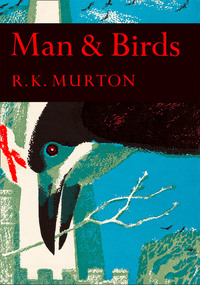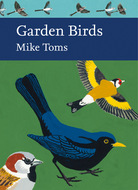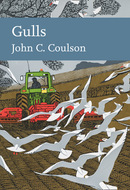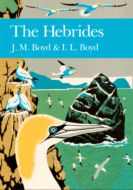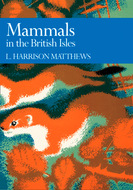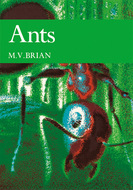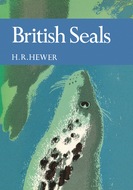Das Buch kann nicht als Datei heruntergeladen werden, kann aber in unserer App oder online auf der Website gelesen werden.
Buch lesen: "Man and Birds"

COPYRIGHT
William Collins
An imprint of HarperCollinsPublishers Ltd 1 London Bridge Street London SE1 9GF WilliamCollinsBooks.com
This eBook edition published by William Collins in 2018
© R. K Murton R. K. Murton asserts his moral rights to be identified as the author of this work
A catalogue record for this book is available from the British Library.
All rights reserved under International and Pan-American Copyright Conventions. By payment of the required fees, you have been granted the non-exclusive, non-transferable right to access and read the text of this eBook on-screen. No part of this text may be reproduced, transmitted, downloaded, decompiled, reverse engineered, or stored in or introduced into any information storage and retrieval system, in any form or by any means, whether electronic or mechanical, now known or hereinafter invented, without the express written permission of HarperCollins Publishers.
HarperCollinsPublishers has made every reasonable effort to ensure that any picture content and written content in this ebook has been included or removed in accordance with the contractual and technological constraints in operation at the time of publication.
Source ISBN 9780007308323
Ebook Edition © JANUARY 2019 ISBN: 9780007403691
Version: 2019-01-09
DEDICATION
TO MY PARENTS
CONTENTS
Cover
Title Page
Copyright
Dedication
Chapter 1: Men and Birds
Chapter 2: Ecological Considerations
Chapter 3: Some Predators and Their Prey
Chapter 4: Birds and Forests
Chapter 5: Birds on the Farm: The Community
Chapter 6: Birds on the Farm: The Animal Feeders
Chapter 7: Birds on the Farm: The Seed-Eaters
Chapter 8: Birds on the Farm: The Grazers
Chapter 9: Bird Problems in Horticulture
Chapter 10: Birds and the Fisherman
Chapter 11: Birds and Industrial Man
Chapter 12: Wild Life Management
Tables
Footnotes
Bibliography
Index
About the Publisher
CHAPTER 1
MEN AND BIRDS
WE can only speculate on the impact of the stone-age hunters of Europe on birds: they must have had some effect at least on those species which were easy to catch. Certainly the larger mammals seem to have felt the pressure of man the hunter as long ago as the Pleistocene. Using molar tooth remains, Soergel has calculated the ages of Pleistocene elephants found at sites where either Heidelberg or Neanderthal man was present and at comparable sites where no human remains were found. In each case the age structure of the elephant population is much lower where man abided, suggesting that he was cropping the populations sufficiently heavily to increase the need for a high rate of replacement by young animals. Some indication of the importance of birds to these ancient hunters may be gleaned from the cave drawings at Lascaux, France. Fisher and Peterson give good reason for believing that they depict a fauna existing in a warm inter-glacial, 100,000 years ago. Flamingo, spoonbill, geese, crane, eagle and raven are all shown, together with a dead hunter wearing a bird mask and sporting a hunting stick adorned with birds.
The earliest indications of man’s interest in cereal culture date back in the Near East to about 8,000 BC. Remains of sickles, pestle and mortar have been found in mesolithic caves of Palestine, and arable farming had reached an advanced stage in the Near East by 3000 BC. This later neolithic culture did not spread to Britain until around 2000 BC and throughout the early and middle bronze ages men were still very much hunters rather than pastoralists, living a semi-nomadic life. Settlement brought man a new relationship with birds, because instead of loose contacts during hunting expeditions, conditions now existed for confining wild creatures and breeding them in captivity, leading to selective breeding and domestication. It is probably no coincidence, as the late F. E. Zeuner points out, that all the important domesticated birds are seed-eaters (pigeons and fowl), grazers or vegetable-eaters (geese and ducks), which could have gained an early association with man through their croprobbing habits. Hence, the first use of birds was as a direct food substitute, their value as egg-producers and for pleasure and sport was not exploited until later. Nonetheless, as early as the Iron Age, in the Hallstatt culture which flourished on the Austrian shores of Lake Constance, there is evidence in the form of a crude carving that man had established a ritualistic link with what was probably a goose. The goose-herd survives as an important element in the rural economy of the Balkans today.
The ancient Greeks and Egyptians had domesticated grey-lag geese, and according to the Odyssey, Penelope owned twenty. Aesop’s fable of the goose laying golden eggs symbolises the wealth enjoyed by these early farmers, by their counterparts the swan-owners of medieval England and the present-day turkey farmers. Furthermore, just as the modern broiler or battery industry is concerned with the most efficient conversion of vegetable food into protein, a fifth dynasty relief depicts captive geese being forcibly stuffed with food – perhaps these Egyptians were already enjoying pâté de foie gras. In Britain, domestic fowl were doubtless kept before the arrival of the Romans, but little information exists until 1578 when Bishop Leslie describes how the birds were caught in nets when moulting, to be pinioned and tamed; at this time the grey-lag was a common breeder in the English fens.
Evidence of the domestication of rock doves goes back to 4500 BC in ancient Iraq, and it is possible that neolithic man had learned how to breed the species in captivity. Early inhabitants of Britain farmed the doo-caves, erecting extra ledges to facilitate the collection of the young, which were then used immediately or reared for breeding. The Norman lords had their dove-cotes, and the practice flourished in rural communities. Domestic fowl, which were probably kept in India as early as 3200 BC, were also associated with religious and sacrificial functions. The evolution of both the rock dove and fowl (and as will be mentioned below the house sparrow too) likely occurred in close association with the emergence of man, making them in a sense pre-adapted to domestication. Indeed, it is conceivable that these species would not have evolved in the absence of man the pastoralist. Recent studies by Collias and Saichuae of the jungle fowl Gallus gallus, the ancestor of the domestic fowl, in Thailand and Malaya, show that it depends on the man-altered habitat produced as a consequence of the cut, slash and burn type of shifting native husbandry. The bird thrives in the secondary scrub eventually produced when man moves elsewhere, and it seems to be poorly adapted to virgin forest. Furthermore, the behavioural patterns of these jungle fowl are virtually identical with those exhibited by domestic strains so that years of selective breeding have achieved relatively little modification in the species-characteristic behaviour.
A painting on the tomb of Haremhab at Thebes in the days of Thothmes IV (1420–11 BC) shows how men kept pelicans in enclosures and collected their eggs for food. Iron Age Glastonbury was less sophisticated, although pelicans and various other birds were caught and eaten by the local inhabitants. We have no idea why the pelican (Dalmatian Pelican) became extinct in Britain between then and the Dark Ages, and if we blame hunting man we have to explain why another great delicacy – the crane – managed to survive until about 1590. Bearing in mind the considerable changes in bird distribution which resulted from the improvement in climate from the late nineteenth century to about 1950, we may hazard a guess that climatic fluctuations also caused important faunal changes in these early years. Pelicans were still nesting in western Europe in the estuaries of the Scheldt, Rhine and Elbe in Pliny’s time. The Dalmatian Pelican belongs to a group of birds which formerly lived on the edge of the Sarmatic inland sea which in Pleistocene times covered much of central Europe, and most of the typical members of this fauna are now relic species, (marbled duck, red-crested pochard, Mediterranean black-headed gull). The doom of these species could well have resulted mainly from the increasing desiccation which followed the wet Atlantic period; although there have been many ups and downs since, the process continues and the remaining strongholds of these birds are vanishing, as the lakes of the Asiatic steppes dry up.
One of these climatic fluctuations led, around 500 BC, to a much wetter period and probably gave an indirect boost to agriculture: Trow-Smith suggests that the resultant growth of scrub on the lighter cultivated soils forced the Celtic immigrants of the late Bronze Age to attend to the heavier lands, and stimulated the invention of the first early plough, the aratrum. Thus the irregular plots of neolithic farmers were replaced by straight furrows and the rectangular Celtic fields. Later, Belgic immigrants in about 75 BC brought the heavy plough caruca which resulted in the long Belgic strip cultivation, the precursor of the medieval system, and opened up land too intractable for the prehistoric plough. The Roman occupation extended the scope of agriculture but did little to improve techniques and it seems unlikely that these peoples did much to affect significantly our forest wild life. The population at this time was probably around a quarter million and very much concentrated in south-east England and East Anglia. The Romans, however, with their dykes and causeways did start the settlement of the Lincolnshire and Cambridgeshire fens. Land development was hindered by the arrival of the Anglo-Saxons, although they continued the drainage of marshes and used them as sheep pasturage. The process was in full swing between 1150 and 1300 and eventually led to the loss of the larger fenland species. The crane disappeared in about 1590, though the spoonbill hung on until 1667 on the Orwell at Trimley, Suffolk. Those other wetland birds, the bittern, Savi’s warbler and black tern, remained until the early nineteenth century (they have now returned following intensive conservation efforts).
The Anglo-Saxons and their medieval descendants were free to catch what birds they liked for food and their main problem was the best means to adopt. Some idea of these methods can be gleaned from the Colloquy of Ælfric, a tenth-century educational dialogue between master and pupil quoted by Gurney.
Magister: What say you, Auceps? How do you beguile birds?
Auceps: I beguile birds in many ways; sometimes with nets, sometimes with snares, sometimes with bird lime, sometimes with a call, sometimes with a bow, sometimes with a decoy.
With William the Conqueror came many of the inconsistencies which still dictate the relationships between birds and men. William introduced the special hunting forests where only the privileged could take the better game animals, and the harsh, unjust forest laws to enforce his ideals, foreshadowing the Game Act of 1831. With William we see the beginnings of those illogical attitudes which defined sport as the prerogative of gentlemen, as distinct from such plebeian pursuits as shooting sitting birds, which though much more humane, were associated with the illicit movements of the poacher or serf. Sport in Norman days included hawking, first introduced to England about AD 860, stag-hunting, hare-hunting and greyhound coursing; and the idea developed of game as animals worth eating and thus to be preserved. Deprived of hunting rights, the husbandman had to find other means for amusement, and cock-fighting provided one outlet. In ages when petty pilfering carried the death penalty and the sanctity of human life counted for little, this must have seemed an innocuous enough sport. Sir Gervase Markham (1638) gives a good account of cocking: ‘then you shall take his wings and spreading them forth by the length of the first feather of his rising wing clip the rest slipe wise with sharp points, that in his rising he may therewith endanger the eye of his adversary: then with a sharp knife you shall scape smooth and sharpen his spures.’ Cock tournaments did not become illegal until 1849, and even today occasional legal proceedings are reported against some mains in north-east England. Quite apart from the appeal of betting, cock-fighting attracted a big following of people roused by sado-masochistic impulses – just as today many watch wrestling and boxing matches who can hardly be all that interested in the arts of self defence. Even at the beginning of the nineteenth century, fashionable ladies could foregather at Hurlingham to watch the gentlemen shoot pigeons released from cages; today trap shooting is harmless because clay discs replace a bewildered bird.
Inevitably there was pressure to find alternative meat supplies, to supplement the vagaries of hunting and to guarantee winter meat, and domesticated and semi-tame birds helped satisfy this need. But from William’s time a host of rules and regulations restricted the number of persons able to enjoy such privileges. Richard II passed a statute forbidding artificers, labourers and persons not having lands of the value of 40s. a year from keeping greyhounds, or using ferrets for taking deer, hares or conies and other gentlemen’s game. Edward IV enacted that, except for the sons of the King, only freeholders of land above a certain value could mark swans; swans on land below this value could be seized for the King.
Most north temperate birds have their breeding season proximately controlled by seasonal changes in daylength, and the deposition of post-nuptial migratory fat and other physiological events also have a photoperiodic basis. This was discovered empirically long ago and led to the practice of mewing – putting birds in the mews usually reserved for hawks, and then subjecting them to artificial light regimes. By being given extra light, muiten birds in Holland could be brought into breeding condition and made to sing in autumn, thereby serving as excellent decoys for the bird catchers trying to attract passing migrants. In Britain, the earlier process of keeping birds in the dark to fatten them was known, and to save on mew space it proved quicker simply to sew up the eyes of cranes and swans: the modern poultry farmer is doing nothing new in principle in regulating the light regime for his battery hens.
The Japanese and Chinese had learned in the fifth century AD that cormorants could be trained to catch fish for their masters – a fascinating use for which these birds are still employed in the East. Knowledge of the practice reached Europe and James I and Charles I both employed a Master of the Cormorants, who, at the royal bidding, travelled widely to display the skill of his charges.
Stone Age man had doubtless learned to take advantage of birds that had regular and predictable habits which made them easier to catch. The flightless condition assumed by wildfowl after breeding must early have attracted attention. Suitable ponds were being turned into decoys by the reign of King John (1199–1266) and were equipped with netted pipes into which the birds were driven, especially flappers in July. The more sophisticated Dutch technique, whereby dogs were employed to appear from behind a series of screens to arouse the curiosity of the ducks and so entice them up the pipes, was not introduced to Britain until the sixteenth century.
It was soon realised that certain dogs were more effective than others; those most resembling a fox in colour and shape seemed particularly useful, presumably because ducks have evolved responses to stimuli originating from natural predators because these have biological significance. The last commercial duck decoy at Nacton in Suffolk has only just ceased operating for profit and has been acquired by the Wildfowl Trust as a centre for the ringing and scientific study of wild duck. The regular migration of wood-pigeons through the valleys of the Pyrenees has enabled the development of a local trapping enterprise by the Basque bird catchers. Long nets are strung across the valleys into which the pigeons are decoyed by men stationed in towers sited along the valleys. These men throw white bats resembling table tennis rackets under the passing flocks, and the white flash stimulates a following response in the birds, causing them to fly lower and lower and finally into the nets.
The role of birds in culture up until Norman times followed a primitive urge to increase the fertility and ease of capture of prey, and was based to a large extent on superstition, fable and omen; the drumming of woodpeckers caused them to be accredited with rainmaking abilities and black-coloured birds were associated with the devil. The Norman love of jousting and tournament combined with twelfth- and thirteenth-century religious influences to produce the heyday of heraldry – an extension of mystical symbolism, both in a military form with such subjects as the eagle and owl, and with the Christian dove and pelican. Bird art in Britain was also much in the hands of the ecclesiastics, and as Tudor points out, certain birds still featured mostly in religious symbolism, as they had in ancient Egyptian civilisations: the hawk was the emblem of Horus, the Sacred Ibis that of Throth, and they were much used for decorating illuminated manuscripts, psalters and breviaries. Between the Middle Ages and the late Baroque, and particularly in the Florentine schools of art, small birds occur as accessory symbols in hundreds of devotional paintings, over three-quarters being goldfinches. Gold wings and the bird’s association with thistles (crown of thorns) made it a symbol of the resurrection and of the soul, but it has also featured as an augur of disease, particularly plague. Friedmann, who tells us this, notes that in nearly all cases the artist has depicted a docile bird; only Michelangelo (in a marble relief now in Burlington House) showed it in a realistic, albeit symbolic attitude fluttering and scaring the infant Christ. The freer use of birds in art came with the Renaissance – but that is outside the scope of this book. Readers interested in the role of birds in music, painting and literature are recommended to read the excellent pen picture provided by Fisher (1966) or specialist works, a few of which are mentioned in the bibliography.
Our knowledge of ornithology in the fourteenth and fifteenth centuries remains extremely scanty, though it is unlikely that man was doing much harm to wild life, especially after the ravages of the plague had reduced the population by nearly half. In 1348, when the Black Death started, the priors of the Monastery of Durham were finding rooks and crows sufficiently numerous on their manors to require thinning and they were enjoying young rooks in season. James I later passed an Act in Scotland in 1424 requiring them to be kept in check. Under-population and under-privilege for most country dwellers, and the decline of the monasteries and their dissolution were associated with agricultural stagnation; in 1500 there were about three sheep to each one of 2½–3 million people. Yet in the mid-sixteenth century emerged the farmers of foresight, who set the pattern of agriculture for years to come. Sir A. Fitzherbert’s Book of Husbandry published in 1534 shows that his knowledge of land drainage and preparation, and of the culture of corn, could set him on a par with the modern barley barons. Both he and Thomas Tusser were among the earliest advocates of enclosure, both emphasising the wastefulness of the old open field system which prevented the development of winter corn growing. Tusser (1573) writes:
The flocks of the lords of the soil,
Do yearly the winter corn wrong,
The same in a manner they spoil,
With feeding so low and so long
And therefore that champion field,
Doth seldom good winter corn yield.
It may be that this early enclosure was creating the right conditions for the proliferation of the corvids. Henry VIII passed an Act which having specifically stated that choughs (jackdaws), crows and rooks had increased and were injuring corn, directed that all persons possessing land were to destroy them. Parishes of at least ten households had to provide nets and facilities for catching the adults and meet annually to agree how best to destroy all the young. Much of the content of this Act was revived in another passed by Elizabeth I, in which provision was made for destroying ‘noyfull fowls and vermin’, including the corvids, buzzard, kite, osprey, harrier, woodpecker, kingfisher, shag, cormorant, bullfinch; and authority was given to the churchwardens to pay a bonus for destruction of these birds, ranging from one to four pence. The money came from taxing the landowners. Henry, or his advisers, clearly had the wits to realise that bonus schemes can be abused, because it was expressly forbidden to make payment for these birds if taken in any park, warren or ground employed for the maintenance of any game of conies, or for any ‘stares’ taken in dove-houses or kites and ravens killed in and around towns; but we do not know how these rules were enforced. A Government subsidy of one shilling and later two shillings was being paid on the tails of grey squirrels until stopped in 1958, and there were those enlightened gentlemen who trapped the animals, cut off their tails and released the creatures in hope that the progeny would provide further remuneration.
The era of the country house dawned in the sixteenth century and ornamental estates and parks blossomed in the seventeenth, and it became increasingly fashionable to keep ornamental birds. Aviculture was not new, the Romans having long before indulged their love of keeping exotic animals in captivity, one result being the introduction of the pheasant Phasianus colchicus to Britain. Increasing travel and interest in science led in turn to more attention being paid to wild life. Charles II had his pelicans and other birds in St. James’s Park, and the climate of opinion in which he founded the Royal Society was appropriate to experimental science, and led to the introduction of various exotic plants and animals, including the red-legged partridge (unsuccessful introduction attempted in 1673) and Canada goose. The rise of the squirearchy was also marked by the appearance of various game laws in the Restoration period, forcing the farmers and yeomen to make unpopular sacrifices in order that the squire could shoot, just as the King by means of the forest laws had supplanted all classes in preceding ages. The cross-bow, firing metal bolts, had been the important weapon until this time; but now the shot-gun replaced hawking as the gentleman’s means of relaxation. It became more common during Charles II’s reign, though not without much controversy, to shoot pheasants in flight instead of simply stalking perched birds or walking them up with dogs. Birds were caught for food with cross-bow, lime, snares, traps and nets, and nets were even used in sport. With the development of the shot-gun, it was gradually agreed that only certain species should be recognised as suitable for sport and be classified as game, and grouse and black cock were allotted to this category. The breech loading gun brought more controversy, just as double-barrelled guns and American repeaters were to do later, but it meant that birds could be driven over the guns and grouse shooting could emerge in about 1855, ensuring that from then on the nation’s parliamentary business finished in time for the glorious 12th August. Actually in 1915, a bill was passed in the Lords authorising the shooting of grouse on 5th August, so that those for whom the war gave less spare time could be ensured their full share of enjoyment. It is to the credit of the Commons that they rejected the bill, amidst shouts of ‘we want to shoot Germans not grouse’. So much have the priorities of men and birds become confused.
The arbitrary rules which grew up in connection with shooting are of interest and importance because they still govern much of our present-day approach to pest control. I have a good friend with a lifetime’s experience of both country sporting traditions and of pest control who was appalled at the suggestion that pigeons should be shot when sitting on their nests. He preferred to flush the bird first before shooting, in order to give it a sporting chance, despite the fact that my suggestion would give much greater prospects of a quick and humane kill. Game preservation and shooting have brought out some of man’s worst attitudes to wild life. In the early days of the big country estates, poachers and gamekeepers were often engaged in open warfare; if hideous traps could be set for vermin it presumably seemed logical for man-traps to be set for poachers. Those days left a legacy of slyness, suspicion and conservatism which has been slow to disappear. The nineteenth century witnessed the worst excesses, with the ruthless slaughter of any predatory bird or mammal, and nothing was allowed to stand in the way of prodigious bags. William Cobbett in Rural Rides (1830) was contemptuous of these so-called sportsmen – especially those who claimed big bags. ‘A professed shot is almost always a disagreeable brother sportsman. He must have in the first place a head rather of the emptiest to pride himself upon so poor a talent.’ In 1903 the Game Rearers Annual stated: ‘The hooded crows are most difficult to destroy and unless poison is used (which, by the way, is illegal) they cannot be successfully coped with. Where poison is used it is generally placed in the eyes of a dead sheep, which usually provides a fatal lure to the hoodies.’ So much for the early Bird Protection Laws. Even today it is proving a slow uphill struggle to educate the more recalcitrant gamekeepers into accepting that such actions do not automatically improve game prospects, but there has been much progress.
Increasing demands for shooting at first led to the augmentation of pheasant stocks by hand rearing, a technique which has grown enormously in the last fifty years owing to a break up of large estates, and to the formation of shooting syndicates and the attraction of city business men, helped by improvements in transport and more leisure. This in turn has led to the scientific study of game-birds and the elevation of game biology to a highly respected place in the wider field of wild life conservation and management, and was heralded by the grouse inquiry (Lovat 1911) already mentioned in the preface. Following the growth of ecology, the Imperial Chemical Industries, Game Research Station (later Eley Game Advisory Station) was formed in 1933. Its ultimate aim was of course to improve prospects for selling cartridges, but under the direction of A. D. Middleton (himself a vital force in the growth of ecology at Oxford) it has set the standards for field ecology in a much wider sense, and made possible the formation of the progressive Game Research Association in 1960, which has subsequently become the Game Conservancy since 1969. In the meantime, the study of grouse was recommenced when the Nature Conservancy inaugurated its Unit of Grouse and Moorland Ecology in 1959 at Aberdeen University. One hopes that the study and amenity of game will become even more integrated within the broader concepts of wild life management in Britain.
But we have moved on too far in time if we are to appreciate what man has done to the land as a habitat for birds. The rate of tree felling increased as the Tudor squires enclosed waste, common and woods, a process that accelerated after 1660 when the Government relinquished its opposition to private agreements negotiated by the landlords. All the same the pattern of the countryside as we see it today had only emerged in south-east England. Even by the eighteenth century there was abundant wilderness, about a quarter of the country being heath and moor, and much of the remainder was medieval with open fields of meadow and arable land adjoining gorse-covered common pasture; by 1760 less than a quarter million acres had been enclosed. One can picture the goose-girl tending her flock idly watching the goldfinches on thistle clumps or stonechats singing from some furze. Bustards were still stalking the chalk wolds of eastern England, white-tailed eagles were nesting on the Isle of Wight.
The big rural transformation came between 1750 and the General Enclosure Act of 1845, most of the open fields going in the sixty years of Farmer George III. Most of the earlier enclosures had been of common, waste and woodland, expensive to achieve but less disturbing for the community in that the old peasant system could still be based on self-sufficiency. The enclosures of the eighteenth and nineteenth centuries were based on economic necessity and were a national policy that brought much suffering and ill-will. In less than a century, they transformed peasant England into modern England. There were many protagonists. Pioneers of modern farming like Arthur Young, who did much to disseminate the latest results of experiments and supported all the agencies like farmers’ clubs, ploughing matches and sparrow clubs which helped to diffuse ideas, claimed that enclosure brought more employment in fence mending and turnip husbandry, even though sheep were lost. Young was enthusiastic but he was inflexible and lacked judgement and others were less enchanted:
